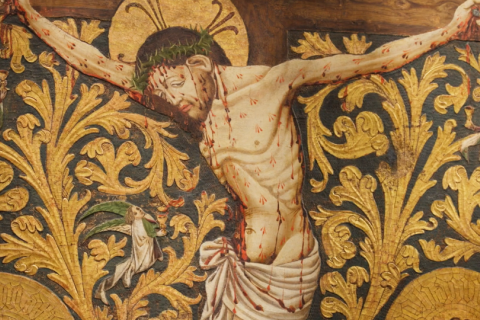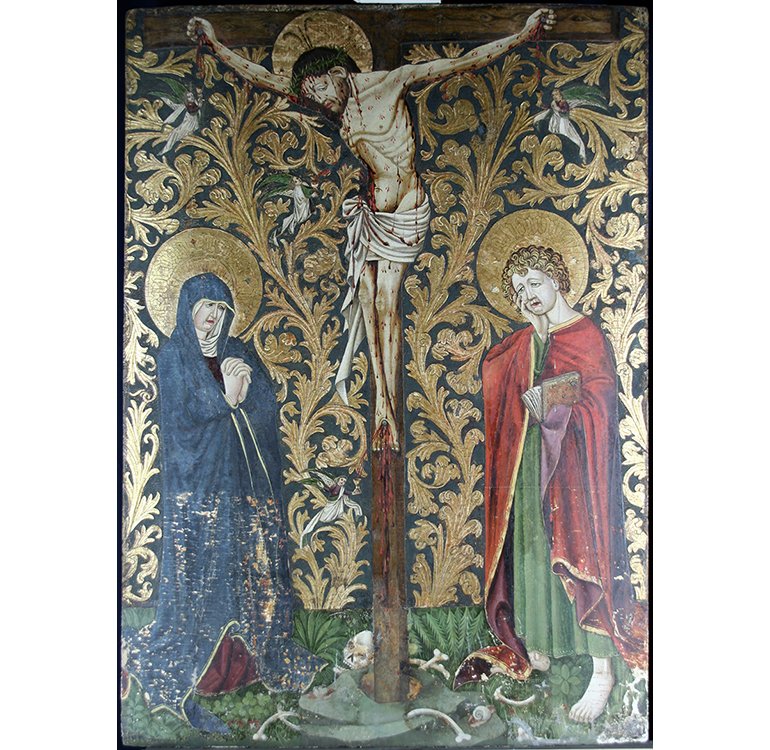To restore an overpainted 15th-century painting to its original state or not?
New 3D scanning technology makes the choice easier
When the painting The Crucifixion (ca. 1425) of the Master of the Lamentation of Christ in Lindau was cleaned for a major exhibition at Museum Catharijneconvent, it became clear that the background of the painting had not always been dark blue. The question that now occupies art historians and conservators is how to restore the painting. When we restore the work, do we or do we not remove this layer? The answer to this question is easier to give with new scanning techniques. "For the first time in history, experts are now using 3D reconstructions to decide how to restore the original" explains art historian Sanne Frequin from Utrecht University. She is a co-initiator of this special project.
In the painting we see Mary, the crucified Christ and John against a dark blue background, decorated with golden tendrils.
Golden background
Initial research revealed that this background should originally have been gold: gold shiny tendrils on a matte gold field. Last year Frequin visited Museum Catharijneconvent with art history students from Utrecht University: "Curator Micha Leeflang told us about this painting. There was a discussion among the students about whether or not to remove the blue layer, which was applied in the 16th century."

Life story of a painting
Frequin: "The question that comes into play is whether you should destroy a work of art to bring out a masterpiece." The painting depicts a bloody scene. "Even the beard of Christ is soaked in blood" says Frequin. "With the overpainting, many drops of blood have been painted over. This changes the meaning of the work. And that is also part of the life story of the painting. If you remove the layer, aren't you doing this life story short? Opinions differ about this. During the visit to the Catharijneconvent, a new 3D scanning technique came up during the discussion among the students. This 3D reconstruction of the golden original and of a polished version of the painting with blue background can help in the decision whether or not to remove the layer. That was the basis for this project".
The scanning will determine how both the material and immaterial qualities of the panel will be restored and conserved.
3D scan of the painting
Through a collaboration of Leiden University, Utrecht University and TU Delft, a 3D scan of the painting was made. The Lucida scanner came to the Netherlands especially for this purpose, courtesy of the Factum Arte foundation. This allowed the researchers to form a clear picture of the original intention of the artists. Based on the scans and both the digital and 3D printed reconstruction, the team consisting of art historian Sanne Frequin, conservator Micha Leeflang (Museum Catharijneconvent), conservator Caroline van der Elst and technical art historian Liselore Tissen (TU Delft, Leiden University) will decide on how the painting will eventually be restored.


